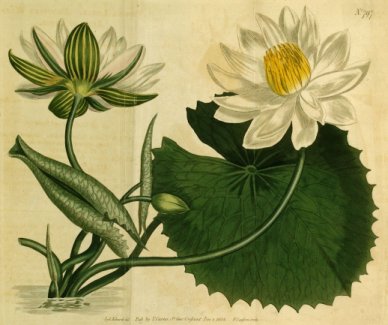
Lotus is the name given by the Greeks to a number of plants whose fruit was used for food. The lotus plant, so celebrated in the religions of Egypt and Asia, is a species of Nymphaea, or water-lily, which grows abundantly on the banks of streams in warm climates. Although more familiarly known as the lotus of the Nile, it was not indigenous to Egypt, but was probably introduced in that country from the East, among whose people it was consecrated as a sacred symbol. In Homer's Odyssey we are told that the same lotus eaters prevailed upon companion of Ulysses to eat the lotus, with purpose of securing their stay with them, as those who eat never wish to go home. What fruit is meant is not known. The Brahmanical deities were almost always represented as either decorated with its flowers, or holding it as a septre, or seated on it as a throne. Coleman says, (Mythol. Hindus, p. 388,) that to the Hindu poets the lotus was what the rose was to Persians. Floating on the water it is the emblem of the world, and the type also of the mountain Meru, the residence of the gods. Among the Egyptians, the lotus was the symbol of Osiris and Isis. It was esteemed a sacred ornament by the priests, and placed as a coronet upon the heads of many of the gods. It was also much used in the sacred architecture of the Egyptians, being placed as an entablature upon the columns of their temples. Thence it was introduced by Solomon into Jewish architecture, being found, under the name of "lily work," as part of the ornaments of the two pillars at the porch of the Temple. [See Lily and Pillars of the Porch.] See Tennyson's The Lotus Eaters

